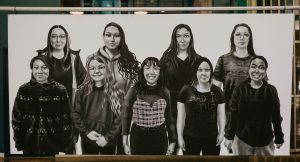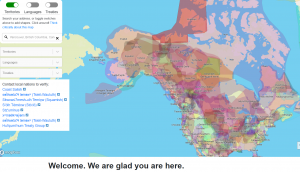I will be looking at Howe’s (1998) 4 aspects of tribalism in my final paper. The first aspect, the spatial dimension is threatened by cyberspace as “identity and land are inseparable” (p.22). After viewing Mary Simmons video this week, she furthers the point that Inuit identity is embedded in language. So how can language/identity be preserved for community member especially those students who have moved away from their nations?
Dr. Parent aims to tackle a three part project that looks at language development through VR, the carving of a new house pole, and the reparation of a house totem pole from Edinburgh, Scotland. I am interested, for my paper, in the VR component (Johnson, 2020).
Dr. Amy Parent believe’s virtual reality has the ability to revitalize the Nisga’a language. She considers language as a “‘guide for a total way of being. It teaches us our cultural behaviors, ethics, and who we are as a people, in terms of our identity,” …“Our language contains important land-based knowledge, which provides us with the ability to live well with every aspect of Mother Earth.'” (Parent, as cited in Van Eeuwen, 2020).
“only approximately five per cent of Nisga’a citizens can speak their language fluently” (Van Eeuwen, 2020). This projects aims to combine technology and the minds of Elders and Knowledge keepers to commutate land-based knowledge in the Nisga’a language. Dr. Parent sees the VR medium as a way to spark interest for youth, and
I am glad I came across this project and want to reach out to Dr. Parent as she is looking for a classroom in Vancouver. It would be great to be involved in this project.
References
Eeuwen, T. V. (2020). UBC Prof Amy Parent creates revolutionary program to revitalize Nisga’a Language. Retrieved from https://looselipsmag.com/features/ubc-prof-amy-parent-creates-revolutionary-program-to-revitalize-nisgaa-language/
Johnson, R. (2020, December 23). Project to use virtual reality technology to teach Nisga’a culture and language. CBC. https://www.cbc.ca/news/indigenous/nisga-a-vr-technology-language-culture-1.5846341
https://amyparent.ca/projects/


